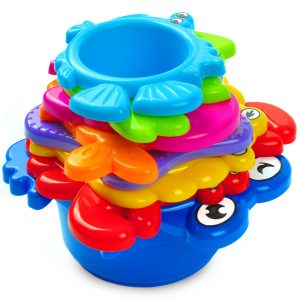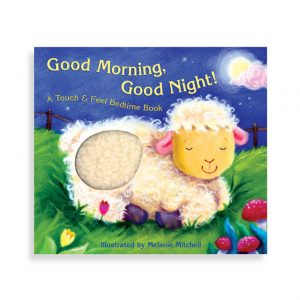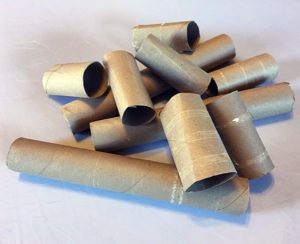Keeping a baby busy is no easy task. Especially when you are itching to get something done on your laundry list, since practically the dawn of time. Once those babies are sitting up, crawling and cruising, there aren’t many obstacles that will slow them down. Well, except maybe a crumb on your kitchen floor. Nothing like something small to stop a baby in their tracks. So what’s all the fascination?
During the first year of life, babies will actively use their hands and fingers to advance their fine motor skills. From picking up puzzle pieces to stacking blocks, babies acquire these skills to learn about the world, engage in their environment and build up strength within their body. Below I discuss more information on baby fine motor development and the toys you can encourage your baby to play with to strengthen these skills.
So, what are these “fine motor skills” anyway?
“Fine motor” refers to how we move the small muscles in our hands, specifically our fingers, palms and wrists (Children’s Therapy). A child’s fine motor development begins at birth when they start to use their hands to explore their own bodies, and the world around them. As they grow and better learn to coordinate their whole body, the child becomes more stable over time, and their fine motor skills continue to develop, progress, and specialize in function (Lowsky).
Fine Motor Skills to Expect for 12-18 months
- Point to pictures in books, objects and people using index finger.
- Build a tower using 2 blocks
- Use hands to hold objects at the middle of the body.
- Otherwise known as Crossing Midline, the ability for either hand to cross over to the center of the body to perform a function, such as holding a toy. This capacity aids in more advance fine motor skills as the child grows, such as handwriting, cutting with scissors, reading, and eating (Lowsky).
- Grasp crayon between fingers to scribble.
- Use a “Pincer Grasp”, the ability to pick up objects with an index finger and thumb to feed bite-sized foods, like cheerios.
- Hold cup and drink with little spilling.
- Independently feed using spoon with little spilling.
- Remove own socks.
- Put hat on head.
Toys that Enhance Fine Motor Skills
Every child gravitates to a different toy. Some love blocks, others go crazy for balls. My little one just goes wild for cups. They could be the kitchen cups, bath cups or the nesting cups we just bought. Doesn’t matter. For her, a cup could be something to drink out of, to wear as a hat, or a bucket to fill and dump things out of. It’s a container with endless purposes. Doesn’t have to be fancy, it just has to be an object you can manipulate in a multitude of ways. Really, don’t waste your money on expensive, name brand toys. We love stopping in our local Tuesday Morning store to pick up many of the toys I discuss in this article, for a low cost. Below are just a few favorite toys that my baby loves to play with everyday.


- Nesting Cups/Ring Stackers/Wooden Blocks
Stacking/nesting abilities depend on on a child’s depth perception, hand-eye coordination, and understanding where their body is in space. When a child stacks a block on top of another block, they will have to visually estimate where to place each object, both in relation to themselves, and in relation to the other toy pieces (Lowsky). In this way, the child is capable of placing one block on top of another because they recognize the position of both objects within their environment.
-
- Puzzles/Shapes Sorting Cube/Ball Slide
Children who have not yet developed enough dexterity or fine motor control, use their entire hands to explore, hold, release, and place objects. At this stage, children are developing their grasping ability. This inludes play skills like picking up a ping pong size ball and dropping it onto a slide. To encourage children at this stage to use fine motor skills, providing larger, chunkier shapes and puzzle pieces are perfect for allowing little ones to practice how to grasp (Lowsky).
- Puzzles/Shapes Sorting Cube/Ball Slide
- “Touch and Feel” Books (To practice pointing to images and touching different textures)
Household Items that Enhance Fine Motor Skills
Yes, the best toys are the ones that are already in your house. They are the objects that your child will be infatuated with, over and over again, because they have been eyeing them since they were able to see across the room. They have been plotting in their little minds how to reach that wooden spoon, or how to crawl over to the kitchen cabinet as you carried them around the house, when they were much younger. So don’t underestimate your child. They remember the things they see in their surroundings. And they are motivated to get their tiny hands on them. Below are just some of the household items my little girl loves to play with in our kitchen while I scramble dinner together.

- Empty food containers (cardboard cereal boxes, empty egg cartons, empty plastic bottles and large caps, Tupperware, and mixing bowls).
For young children, the important fine motor skills of intentional grasp and release is learned through “Dump and Fill” play. This is a type of play that is practiced when the child picks up items and puts them in a container, to be filled, and then removed. Dump and Fill play also allows children to develop control on the positioning of their fingers when manipulating toys (Lowsky).
- Cabinets and Draws/Pots and Pans/Wooden Cooking Utensils
Giving the child there own cabinets in the kitchen, with objects they can get their hands on, gives them the opportunity and independence to explore their own environment. In this way, the child is able to practice engaging their fine motor skills by using wooden spoons to bang on pots and pans, nest smaller mixing bowls within larger ones, or even fill and empty a kitchen draw. Even by providing the opportunity for a kitchen cabinet or draw to be pulled open, the child is able to strengthen muscles in the hand to develop fine motor skills.
- Paper towel/ Paper toilet tubes (To poke finger in tube, bring tube to eyes and mouth)
Setting up an environment for your child to practice developing their fine motor skills is the first step in encouraging them to meet these milestones. By providing the opportunity to practice dump and fill games, crossing midline and using their pincer grasp, the child is learning different ways to play and comprehend their world. So reorganize those kitchen cabinets and pull out those pots and pans. Your baby wants free range to explore. They will have a blast, and you, may actually get dinner done on time.
Sources:
Lowsky, Debbie. “How Stacking / Nesting Toys Can Develop
Early Language and Fine Motor Skills – ARK
Therapeutic.” ARK Therapeutic – Makers of Innovative
Special Needs Products & Sensory Therapy Tools. ARK
Therapeutic Products, 18 Mar 2018. Web. 17 Feb 2018.
http://www.arktherapeutic.com/blog/how-stacking-
nesting-toys-can-develop-early-language-and-fine-motor-
skills .
